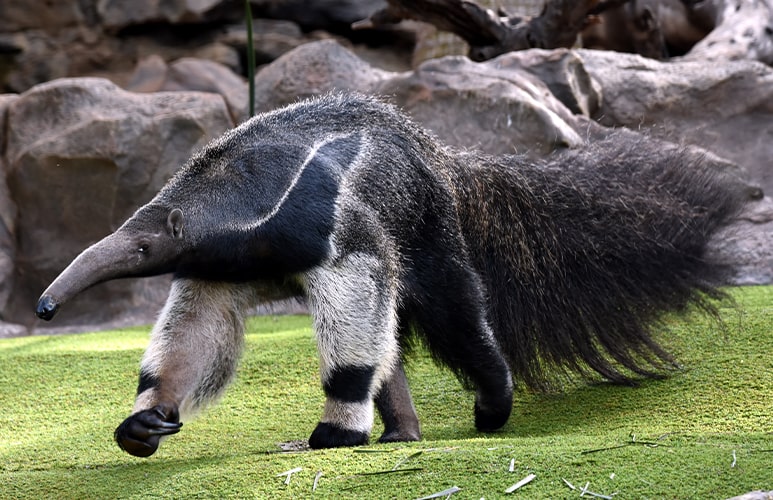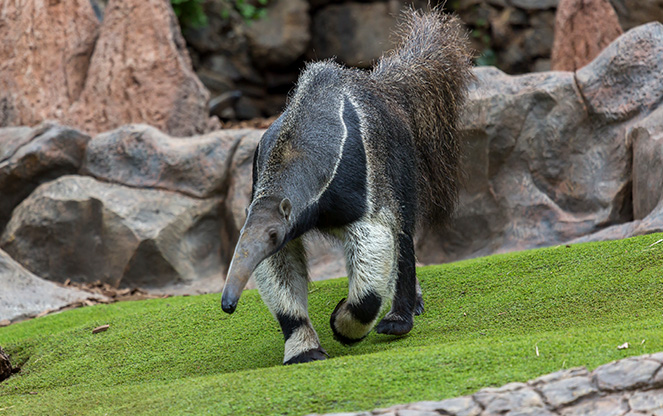Anteater
Myrmecophaga tridactyla
Easily recognisable by their long snout and small mouth, anteaters are native to the American continent. They can be found in a wide range of habitats, such as tropical and dry forests, savannahs, swamps… where the ants and termites upon which they feed are abundant.
They can be more active at night, but also during the day, and select tall grass or leafy bushes to lie down and rest. While sleeping, they wrap their tail around their bodies to retain heat and camouflage in the surroundings.

WEIGHT
Up to 41 kg

DIET
Ants and termites

ORIGIN
Central and South America

GESTATION
183 days
Interesting facts about anteaters
They can ingest more than 30,000 ants a day.
They are toothless but have a 60 cm long sticky tongue covered in spines.
They are excellent swimmers, even able to cross rivers.
How we help the conservation of anteaters and other mammals

The current conservation status of the anteater is listed as vulnerable. It is therefore especially important to ensure the preservation of as many individuals as possible and to promote the proper conditions for their reproduction and survival.
The male and the two females that live in Loro Parque are part of the European Breeding and Conservation Programme. Through this initiative, modern zoos conduct demographic and genetic studies and follow a plan for managing the specimens that live under human care.
This provides in-depth knowledge of the needs of each animal, helps to discover new features or behaviours, and identifies the key factors that contribute to the welfare and breeding of the animals.











